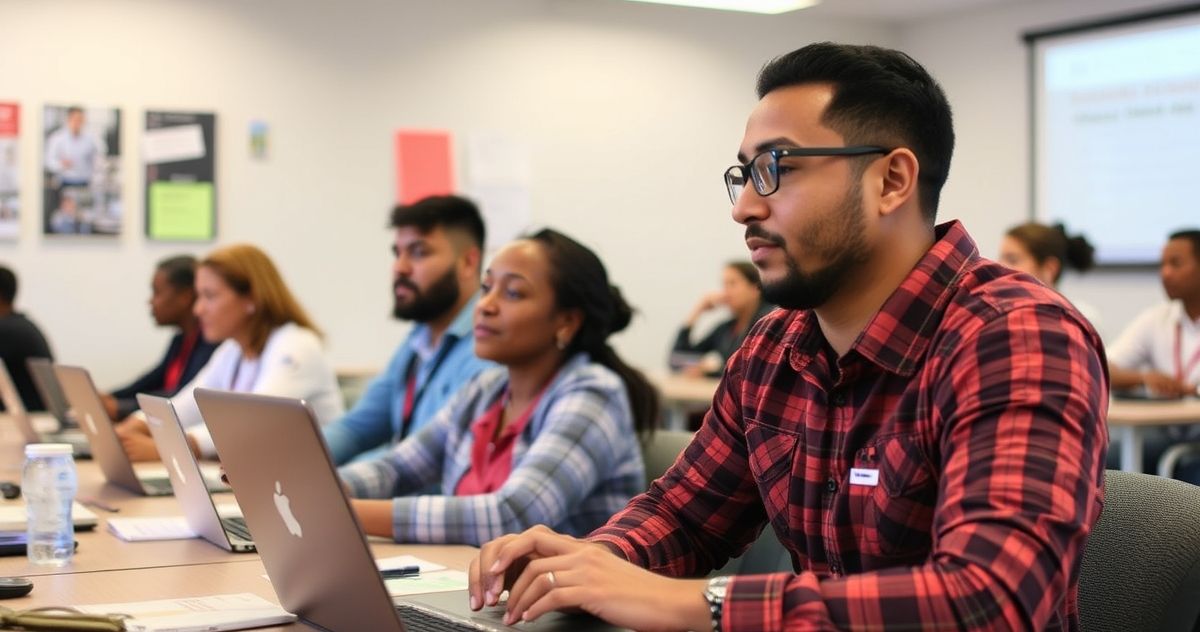Artificial intelligence (AI) is rapidly reshaping the global workforce, but not all groups are affected equally. A new study by the Stanford Digital Economy Lab highlights a troubling trend: young workers are disproportionately vulnerable to AI job displacement. Early-career employees, especially those in their 20s, are increasingly struggling to secure stable roles in industries most exposed to AI automation. This shift raises urgent questions about the future of employment, education, and economic opportunity.
AI Job Displacement Hits Young Workers Hard
The Stanford research analyzed employment trends from late 2022 to mid-2025 and found that workers aged 22–25 have been hardest hit by AI-driven changes in the job market. In sectors like software development, customer service, and administrative support, employment for young workers declined more sharply than for older cohorts.
By contrast, roles in healthcare support, construction, and skilled trades—fields less vulnerable to AI automation—showed steady or even rising employment. This divergence suggests that early-career workers are becoming “canaries in the coal mine,” facing the first wave of AI-related job disruptions.
Why Early Careers Are Most at Risk
Young workers often enter the job market with less experience, making them more replaceable when companies adopt AI solutions. Several factors contribute to their heightened vulnerability:
- Lower seniority: Companies often cut entry-level roles first when automating.
- Skill mismatch: Many young employees lack advanced AI or data skills.
- Limited networks: Younger professionals have fewer connections to help them transition.
- Training gaps: Education systems are still catching up with AI-era skill demands.
This combination leaves early-career employees exposed to displacement while older, more experienced professionals are better positioned to adapt.
Stanford Research: Key Findings on AI’s Workforce Impact
The Stanford Digital Economy Lab’s study revealed three shocking insights about AI job displacement:
- Employment Decline for Young Workers in AI-Exposed Jobs
Roles in customer support, basic coding, and data entry saw significant drops in youth employment compared to older age groups. - No Major Wage Decline Yet
While job opportunities shrank, wages for those who kept their positions did not fall substantially. This suggests that displacement is occurring through hiring freezes and reduced entry opportunities rather than direct wage suppression. - Shifting Demand Across Sectors
Healthcare aides, construction laborers, and maintenance technicians experienced growth in demand, highlighting the uneven impact of AI across industries.
These findings underscore how AI’s workforce effects are not uniform but skewed against younger workers starting their careers.
The Future: Skills and Policies to Mitigate AI Job Displacement
The research raises a critical question: how can society protect early-career workers from AI job displacement? Several strategies are emerging:
- Upskilling and reskilling: Young professionals need training in data analysis, AI collaboration, and digital literacy to remain competitive.
- Policy support: Governments could incentivize hiring younger workers through tax breaks or subsidies.
- Stronger career guidance: Education institutions must align programs with AI-era demands.
- Focus on human-centered roles: Jobs requiring empathy, creativity, and hands-on skills remain less vulnerable.
Without intervention, we risk creating a generation left behind by automation. But with proactive steps, AI can become a tool for empowerment rather than displacement.
Conclusion
The Stanford study delivers a clear message: AI job displacement is already reshaping the employment landscape, and young workers are on the front lines. While wages have not collapsed, opportunities are shrinking, signaling the urgent need for policies, training, and career pathways that prepare the workforce of tomorrow. The choices made today will determine whether AI deepens inequality—or helps build a more resilient, inclusive labor market.
Read the original Stanford research summary here.
For a broader perspective, explore World Economic Forum’s Future of Jobs Report.
Explore related insights on AI and Employment.



